Ever-changing landscapes, waking up at sunrise in our roof-top tent, chilly mornings and evenings with baking heat in between, boerewors on the braai. Long drives in a wild emptiness so remote it feels like the end of the world. We love the freedom that roadtripping brings, and the endless possibility for adventure that comes naturally with travelling in Africa. What could be better than combining all that in a roadtrip from South Africa to Namibia and Botswana?
Not much, we thought, especially since we were starting this trip in Cameroon. We figured by the time we’d dragged ourselves through Central Africa on public transport, we’d be ready for a break. Anything the road threw at us, flat tires or broken canopy brackets, rampaging elephants, sandpits, not actually knowing how to handle a 4×4 off-road – all that would pale in comparison. So we arranged to pick up a 4×4 Ford Ranger in Johannesburg.
But first, some helpful hints
We’re not strangers to adventurous drives. But this is southern Africa we’re talking about, so before signing off on a fully loaded camping vehicle and driving it out of Johannesburg, we did some research into security. Oyv read up on all the ways to avoid getting carjacked, such as rolling into intersections but never quite stopping, opening driveway gates at the very last second, and not driving in South Africa. It’s not quite like roadtripping in Australia’s top end, for example, where we stopped and got out whenever we wanted. Or when we drove the Pamir highway in Tajikistan, picnicking our way along the Afghan border. This felt different. By the time we finished reading the warnings and advice we’d reached the conclusion that we could barely step out of the car at a petrol station. With a mental note to double check what would happen if the car got stolen, we headed off to the rental office.
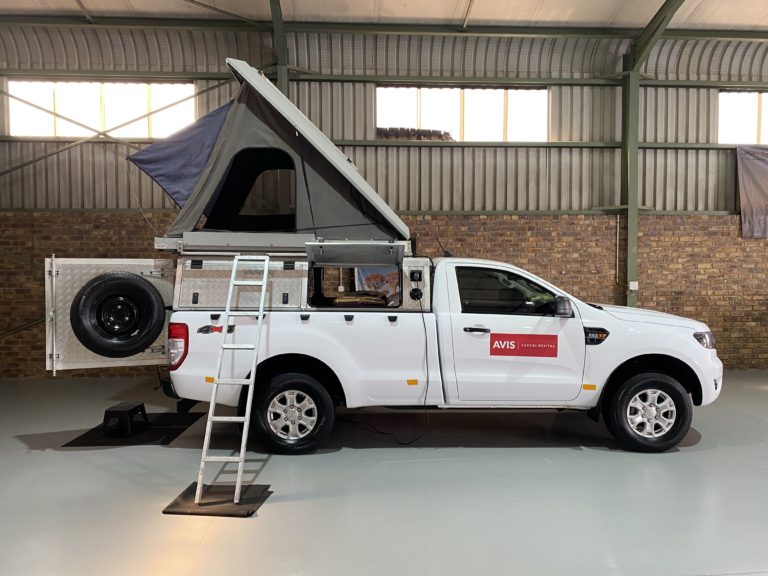
‘This is Africa’ said Kevin the car rental guy for the third time during the vehicle handover. ‘There are animals everywhere. Elephants in the road left and right in Botswana. If you get too close, they’ll get mad, and you’ll cry.’ He nodded seriously, but he wasn’t done. ‘Never talk to anyone around an ATM. Those guys are mean. They’ll take your money and you’ll cry.’ He showed Oyv the tool kit and how to pop the roof tent. Then: ‘This is your department’ said Kevin to me, and he demonstrated turning the gas stove on and off.
It wasn’t just carjacking, elephants, and ATM thieves that we might end up crying about according to Kevin. ‘Look, Namibia is full of puff adders’, he went on. ‘They’re lazy, but they strike fast. And it’s the scorpions and spiders in the firewood you really have to watch out for.’ He stared pointedly at my feet in flip flops.
On the way to our first camp we stopped in a small town for groceries. There were signs posted around the parking lot and out in the street warning that this was a high crime area. A fellow shopper approached us as we loaded our fridge with boerewors and wine. ‘There are bad people here’ she said, eyeing the car and then a group of guys lurking around an ATM. We stopped organizing the fridge in a manner my Dad would have approved of, and just tossed everything in and locked up.
But nothing could dampen our enthusiasm. Camp cooking essentials onboard, we were finally ready to go. And nobody stole the truck while we were in the Shoprite, so that was a plus.
Into (and out of) the Kalahari
The Trans-Kgalagadi National Park in the Kalahari desert overlaps the borders of South Africa, Namibia, and Botswana. It means that you can drive into the park from one country and out into another.
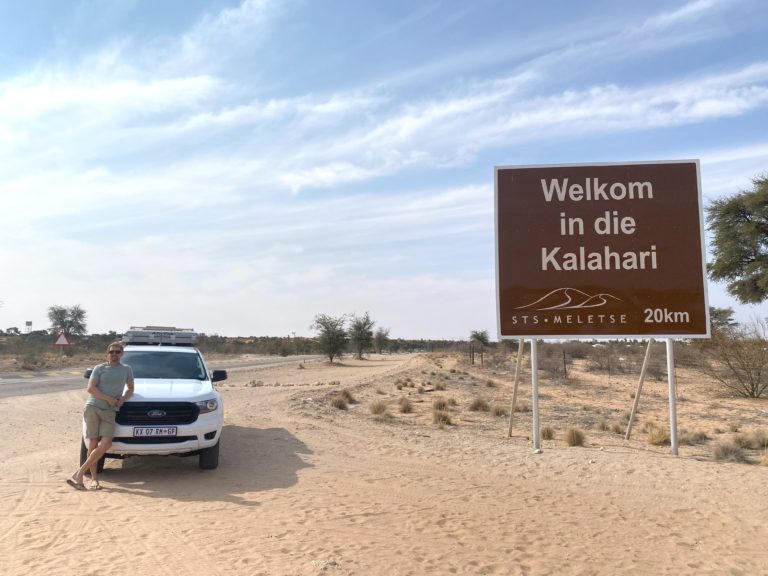
We’d been staying in a campground on the South African side where pensioners had staked claim to all the best sites and set up for life, with astroturf lawns rolled out in front of their trailers. The camp was also overrun with meerkats hiding from a vicious honey badger on the other side of the fence.
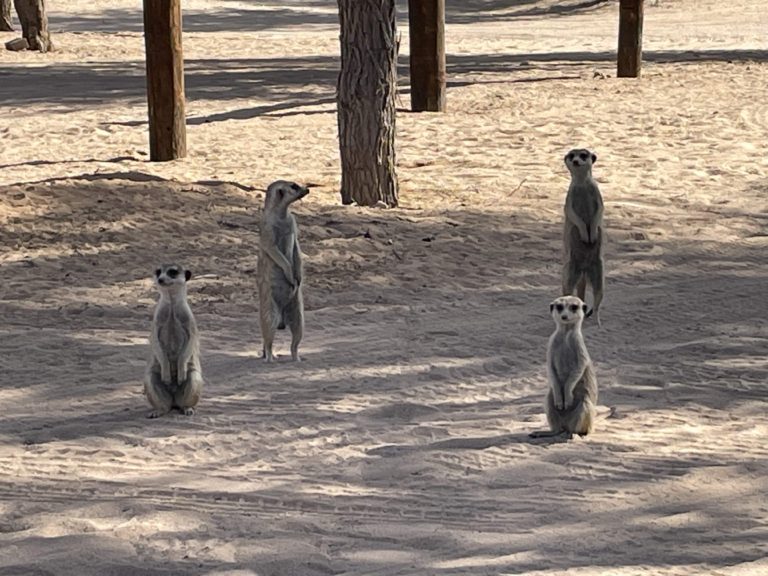
Early one morning, we drove out of the park from South Africa into Namibia, and the road immediately stretched ahead of us into nothingness.
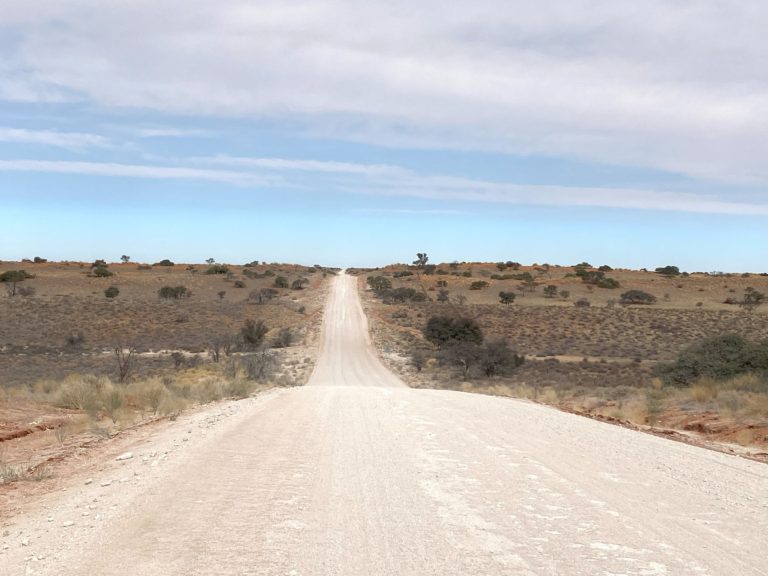
Our first stop in all that emptiness was Kolmanskop, a ghost town partially buried under shifting sand dunes.
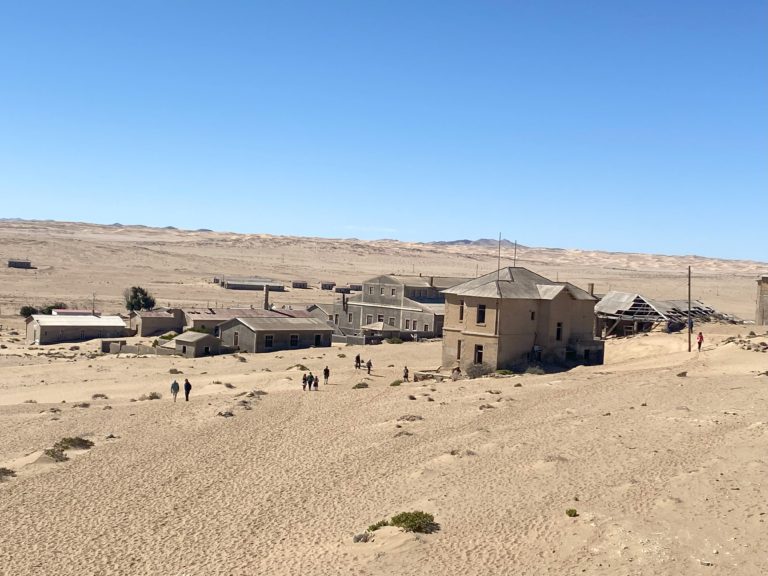
In 1908 in what was then German South-West Africa, somebody around here found a diamond in the sand. The government declared the entire place off-limits and brought in miners. The new settlement thrived, complete with a school, hospital, and a tram line. It was easier to import cases of champagne than to get water, and they had all sorts of entertainment including a laundromat doubling as a brothel. Obviously.
The houses had electricity, indoor plumbing, and refrigeration – not bad for the times, and considering their location in the Namib desert. Some original furniture is still here, and you can even leaf through the purchaser’s book of orders.
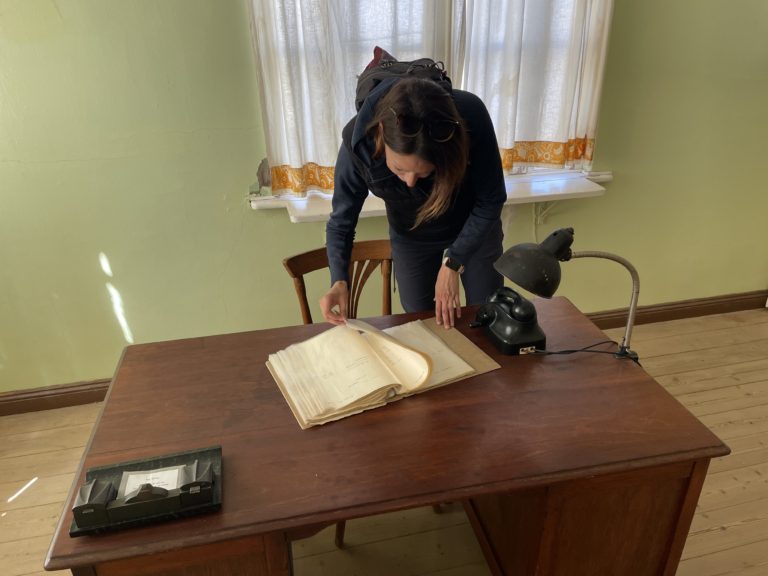
But diamonds aren’t forever. By the late 1920s the miners moved on in pursuit of the next big rush, leaving Kolmanskop to the sands of time in a very real way.
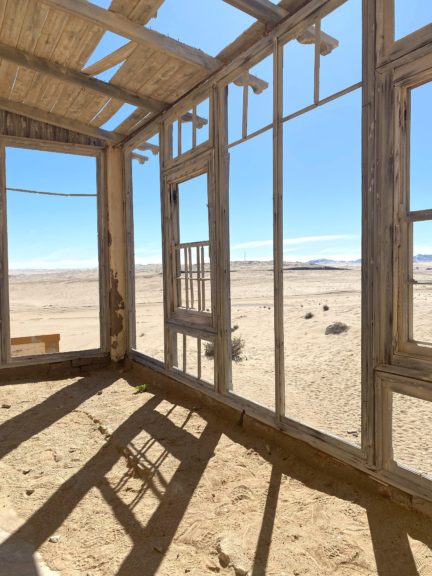
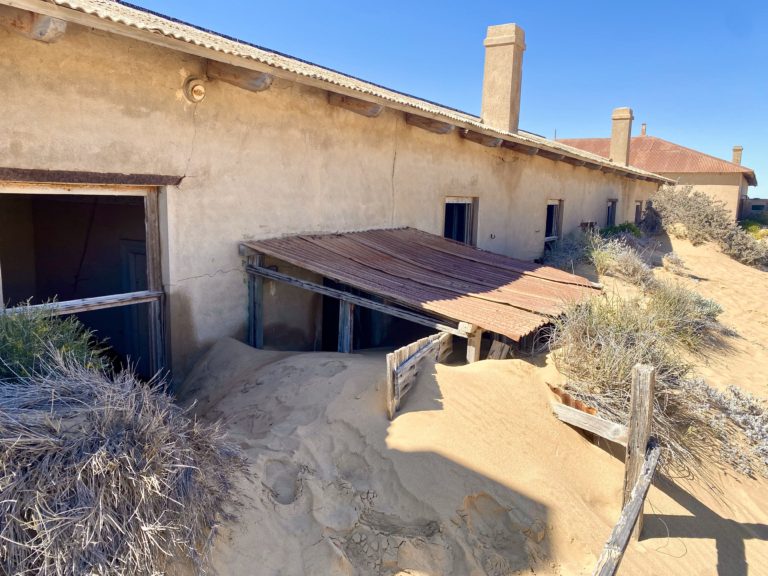
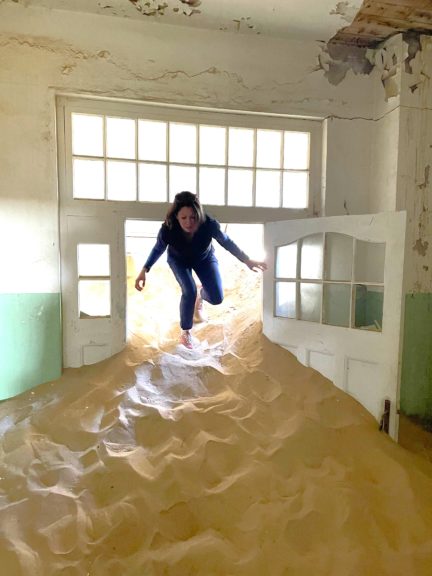
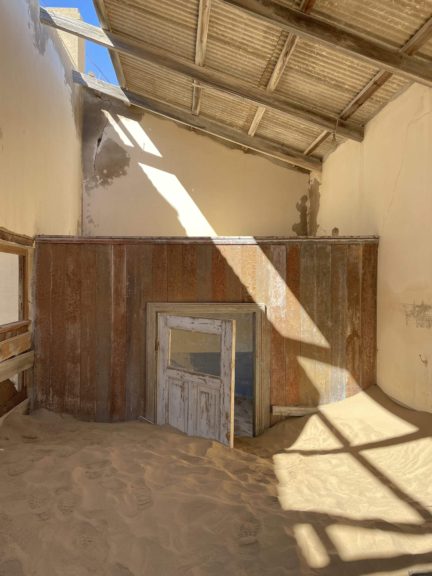
There might be some diamonds left though. The surrounding Sperrgebiet – prohibited area – is still off-limits, signed with threats of fines and imprisonment in case anyone thought of doing a little digging.
Speaking of things located in the Namib desert, less than a day’s drive from Kolmanskop are some of the tallest sand dunes on the planet.
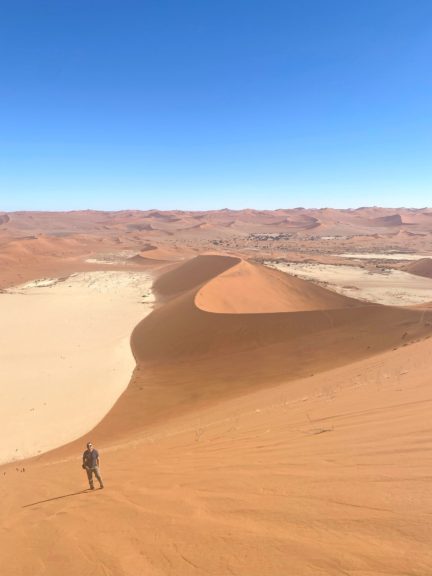
The very tallest of these ancient orange and red dunes surround a salt pan called Sossusvlei, and reach staggering heights of over 300 meters.
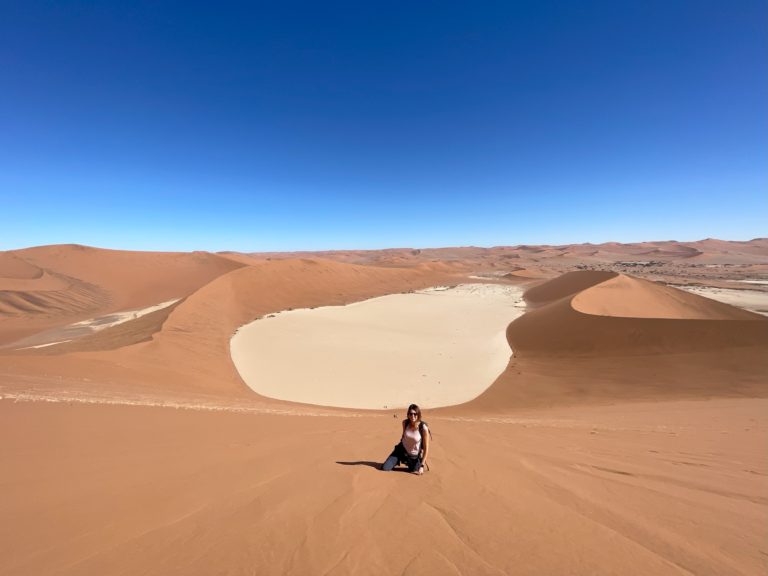
The best way to truly appreciate this height is by climbing up and running down these sand mountains under the hot glare of the desert sun. You can also try inexpertly driving your 4×4 through a ‘sand river’.
There’s another salt pan nearby named Deadvlei – so called because it’s filled with the sun-blackened remains of camel thorn trees.
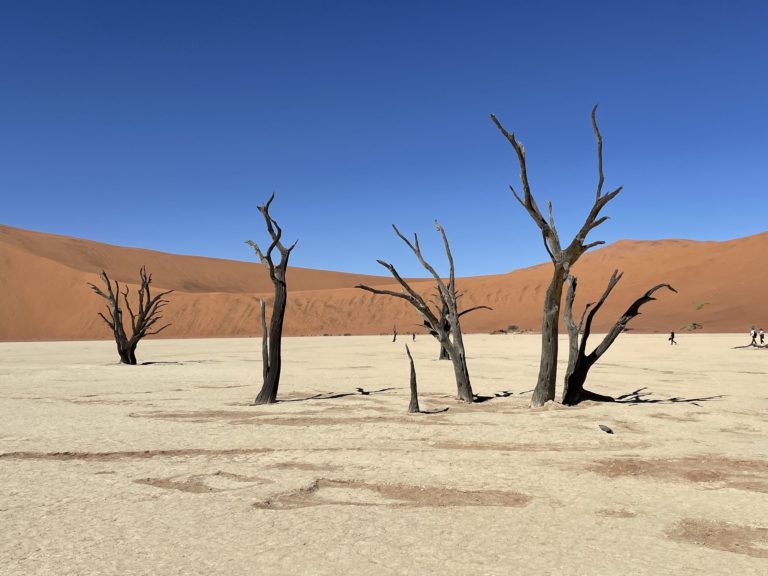
The pan was a green oasis once, but the river dried up and the trees died. In all that dryness the trees didn’t decompose, and they still stand here now – almost a thousand years later.
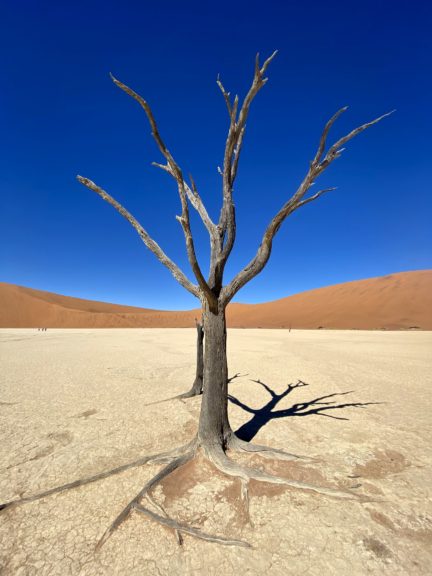
And still, we kept driving.
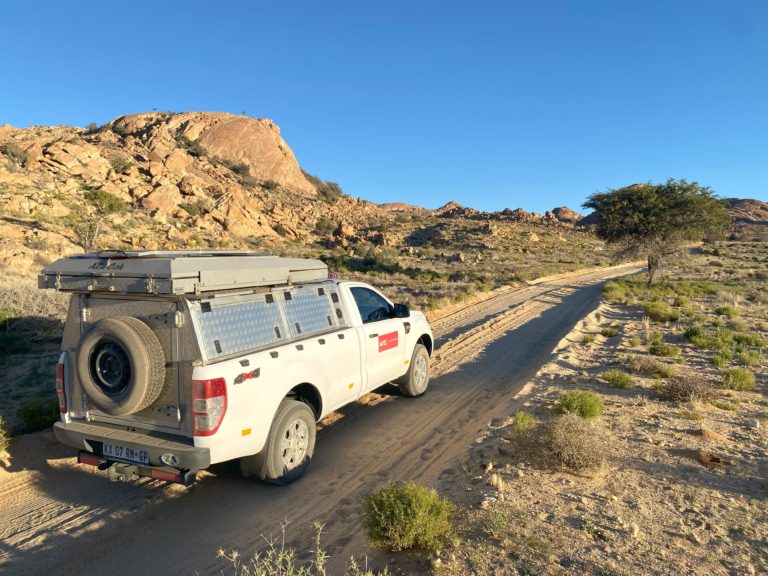
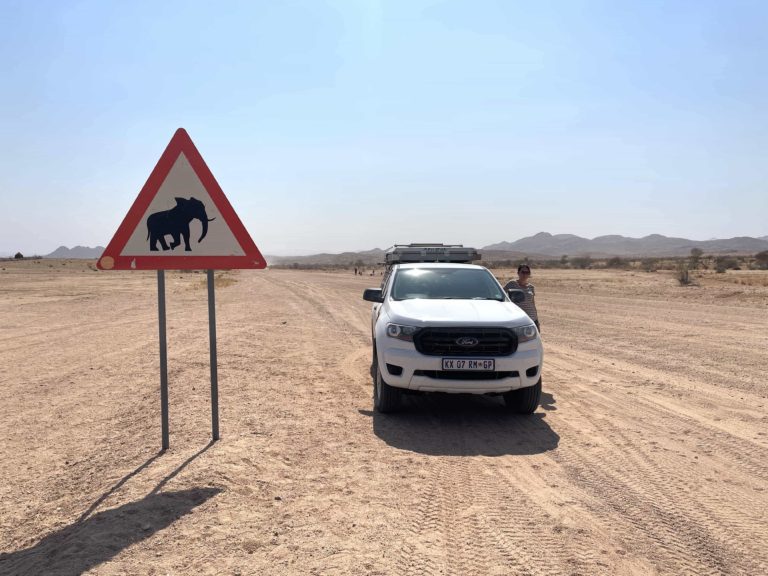
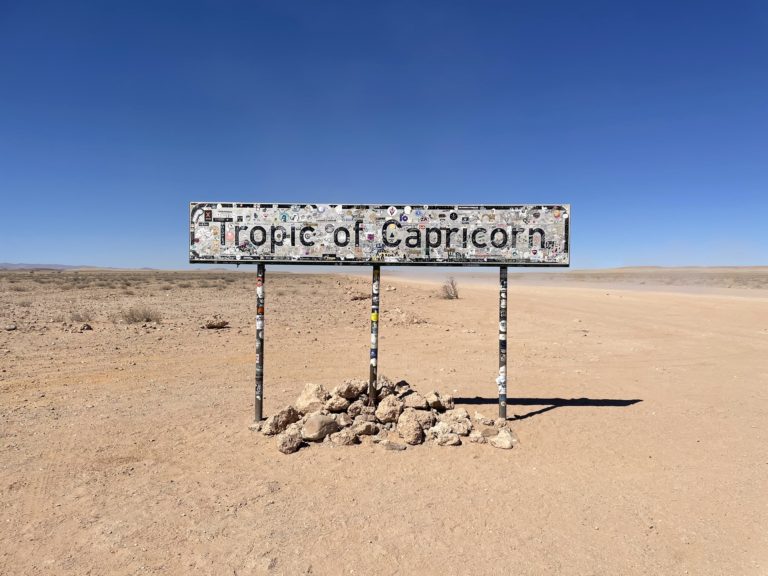
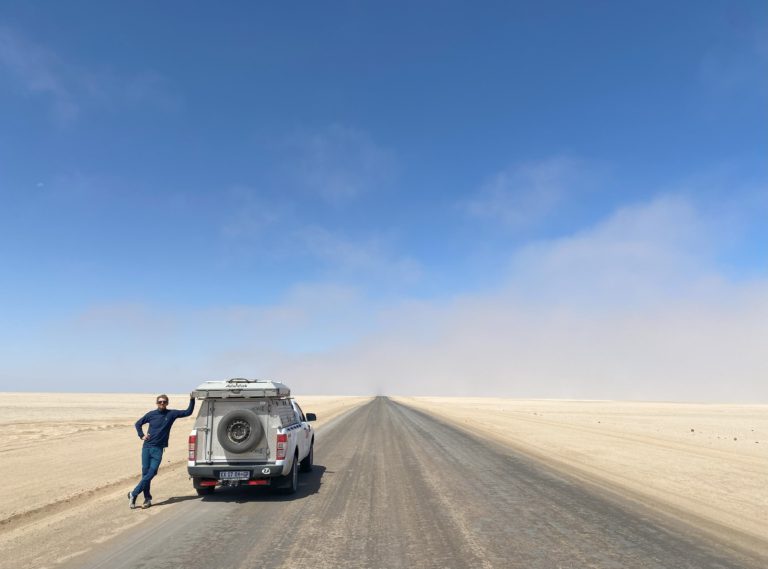
When we’d driven far enough the desert gave way to the ocean and we stopped at Cape Cross. In 1486 the sea-faring explorer Diego Cao also stopped here, and set about claiming the place for Portugal with a large stone cross he’d brought especially for this purpose. It’s thought that he landed here because he noticed the hordes of seals carpeting the shore.
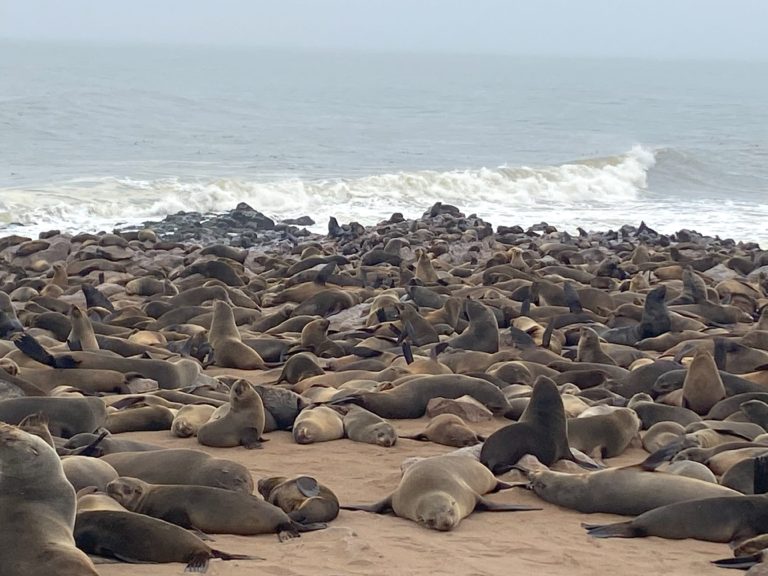
They smell terrible so the place is hard to miss.
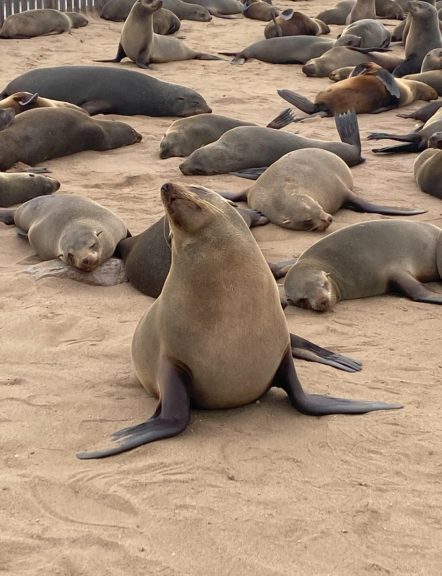
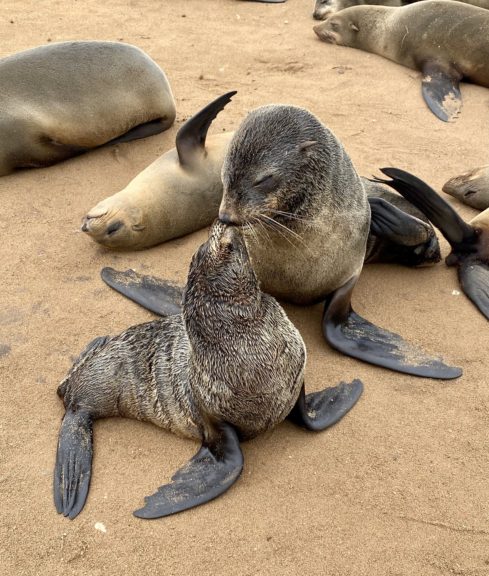
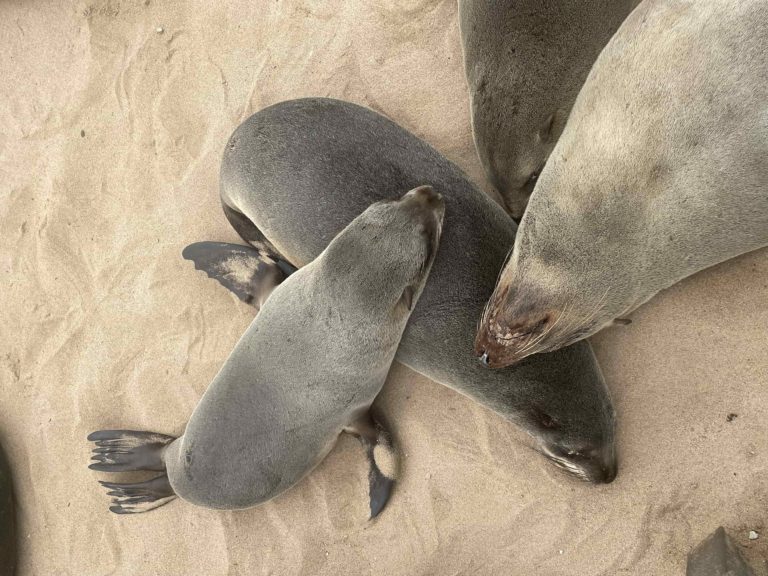
The Portuguese are long gone, although they explored and exploited their way up and down the coast of West Africa for years to come. But tens of thousands of seals on their way north continue to flock to the colony, and we all keep stopping here, despite the smell.
Home on the road
‘There are lions and leopards around here. Don’t leave the site on foot.’ said the campsite manager, and then he jumped in his pickup and drove off, leaving us standing in a clearing all alone. Yep, from meerkats to lions and everything in between – puff adders come to mind – camping in southern Africa is next-level.
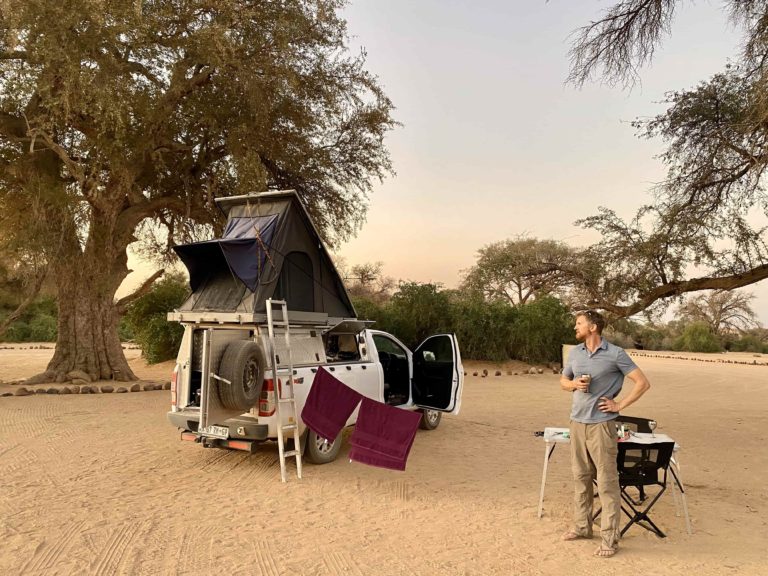
It took us exactly one camp cooking session and a single night in the roof tent to start considering stealing the truck ourselves and becoming vanlifers.
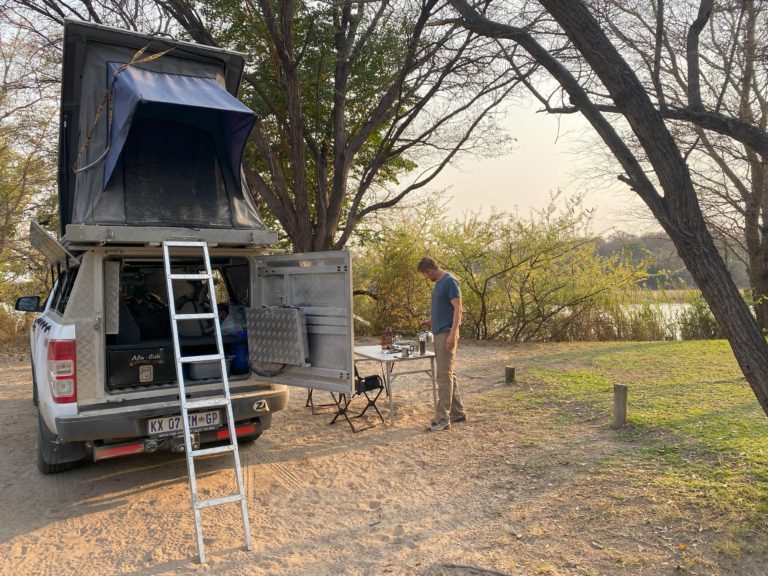
Yeah sure, there’s a steep learning curve which we kind of failed – on day 5 we didn’t deflate the tires enough before hitting a long gravelly stretch of road and we punctured a tire. On night 4 as Oyv attempted to light the fire and grill an unspecified piece of game meat in a blustering icy wind, we wondered why Kevin didn’t add freezing to death to his list of things to potentially cry about – it’s winter here after all, and desert nights are cold. Heart attacks wouldn’t be out of place on Kevin’s list either. Throwing a piece of red meat on the braai is the cornerstone of southern African culture and every evening we could be found grilling up a nice juicy slab of it.
And we still had the occasional brush with crime to contend with. Like when a manager at a remote campsite remarked that we should keep an eye out for poachers. ‘We had an incident a month ago’ she said. I envisioned a rhino lying next to the road, horn slashed off. ‘They came from across the river’ she went on and I cast a glance at the narrow strip of water running across one side of our site. ‘And they stole all our laundry’.
But…camp life.
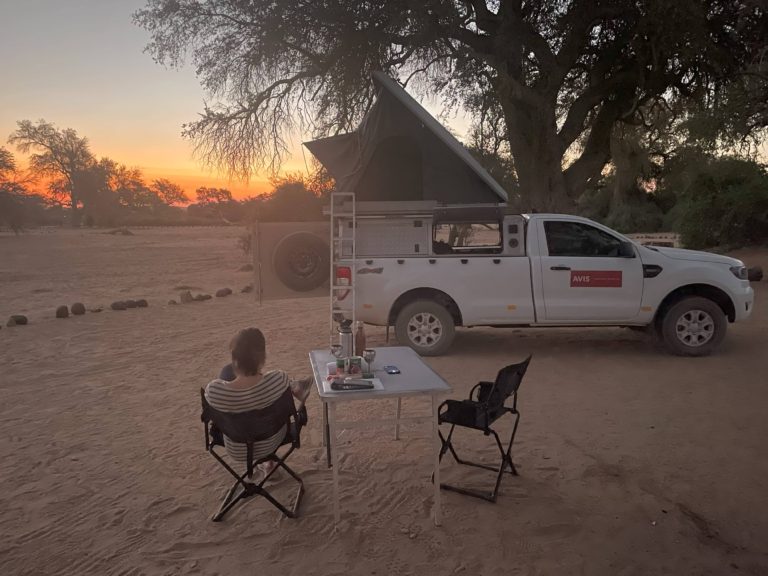
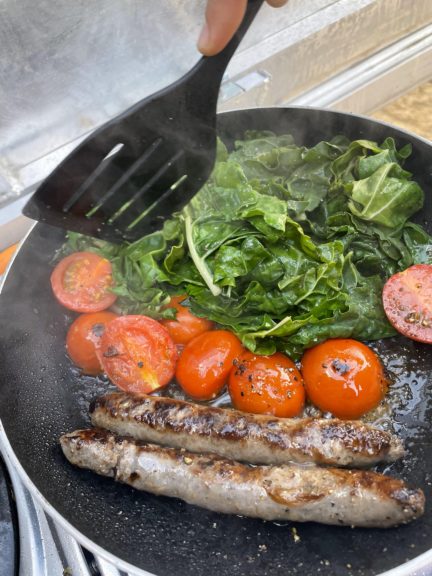
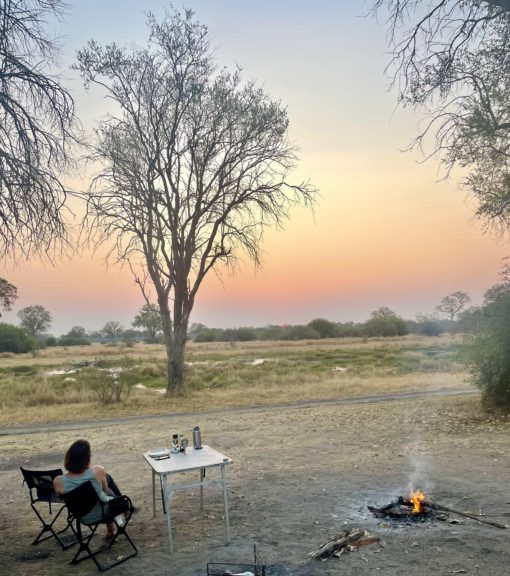
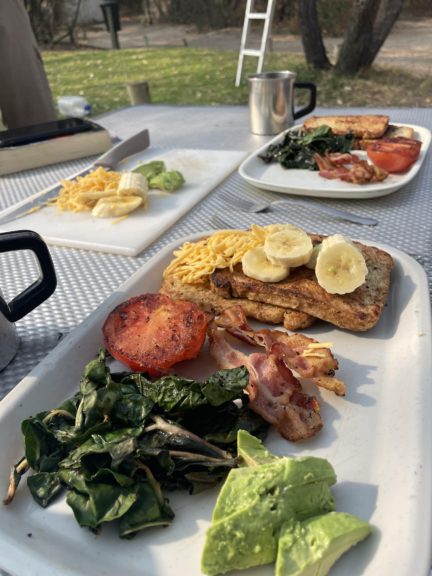
We tried all sorts of sites, from isolated no-frills bush camping to tidy little camps with open-air kitchens and showers. Sometimes there was a fence between us and the unknown, and other times…not so much.
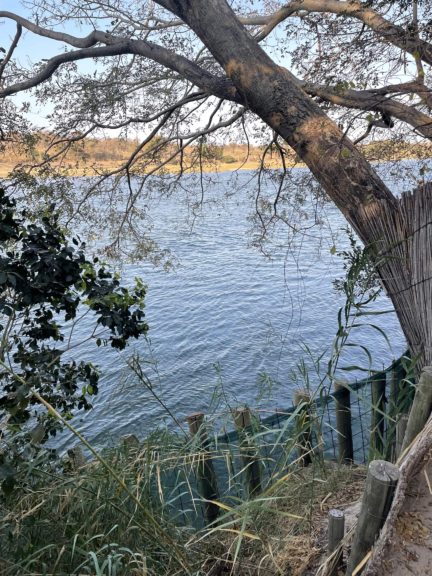
And sometimes Oyv made us a ‘wildlife barrier’, as he called it:
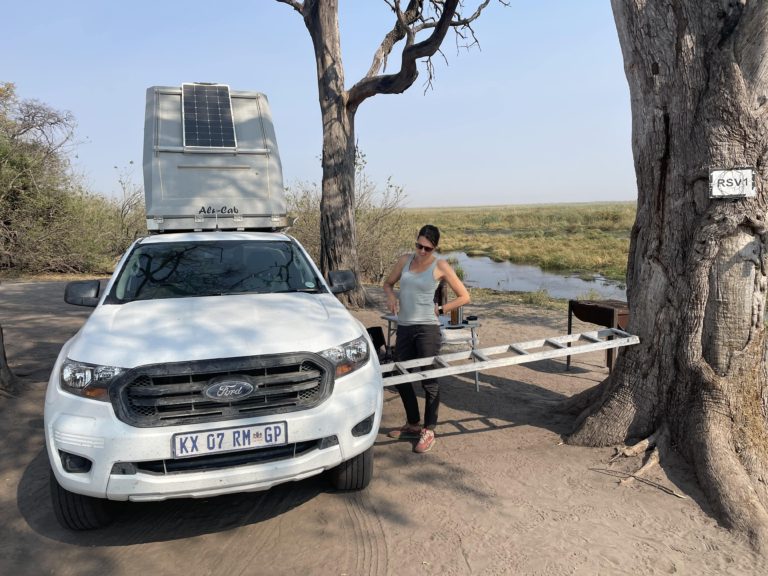
Sometimes we were all alone with nothing but mysterious noises from the darkness on all sides (hippos, for starters, are surprisingly noisy at night). Other times we had a few more amenities like this bath with water we heated on a wood burning stove:
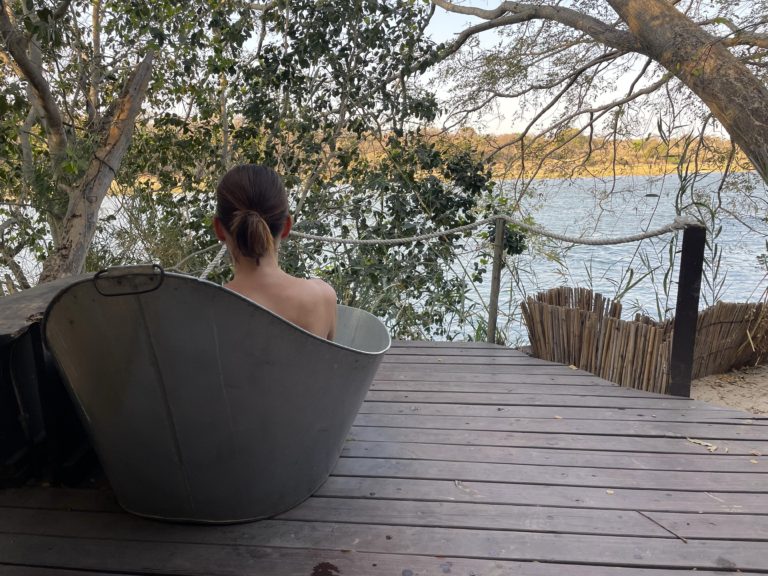
One of our campgrounds was next to a big waterhole, floodlit at night. We sat there in total silence, watching the rhinos and elephants come to drink.
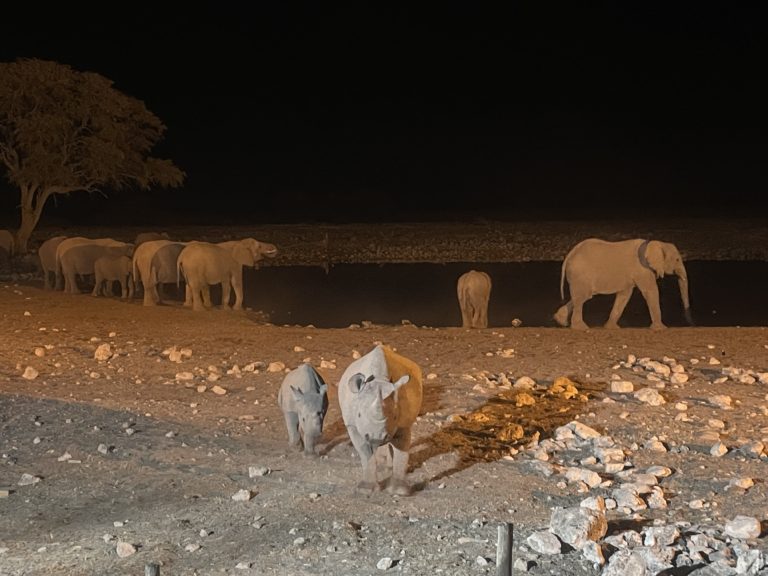
Afterwards, we fell asleep in our roof-tent listening to lions roaring in the night.
Botswana – elephant country
‘If I see another elephant’s ass…’ I muttered into my water bottle. ‘Well, it’s not like you want to get right in their face though’ Oyv pointed out reasonably enough. We were stopped again, waiting at a relatively safe distance behind some elephants in the road. Keeping your distance is easier said than done, when you never know where the next herd will appear.
We hadn’t experienced a wildlife shortage yet, and most of it seemed to congregate in the roads, but by the time we reached Botswana it was bordering on ridiculous. I mean that in a good way. These animals are amazing, even if they do disrupt traffic. Botswana really, truly, is elephant country.
To cross into Botswana we had to drive the car through a shallow pool of disinfectant and then get out and step into trays of it ourselves. There’s hoof and mouth disease in Namibia but they’ve stopped it at the border somehow, and are vigilant about keeping it out. Officers searching cars for meat products, and potentially contaminated shoes – it’s a different sort of border control than we are used to in Africa.
Once we left town, we used maps.me to find our way around on roads that weren’t much more than faint trails etched in the dirt or deeply rutted stretches of treacherous sand. Besides the app, we also had a map, traced in the dust by the owner of the last lodge we stayed at back in civilization.
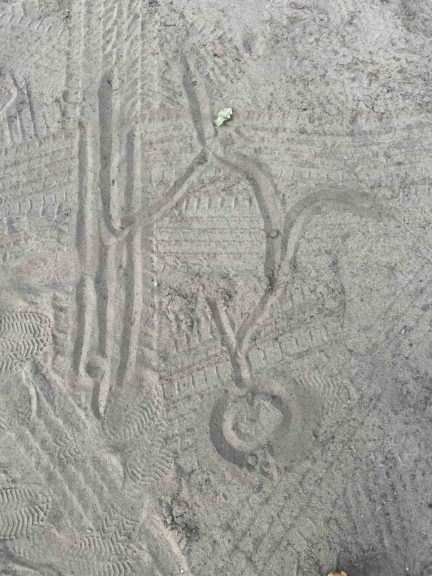
Jim, the owner, reminded me a bit of Kevin at the car rental. He was full of stories of previous guests who had to be towed out of axle-deep sand, or got lost for days between camps. ‘We’ve got a satellite phone with us’ I pointed out. ‘So did they, sweetheart’ said Jim darkly.
And so we spent the next few days in elephant country.
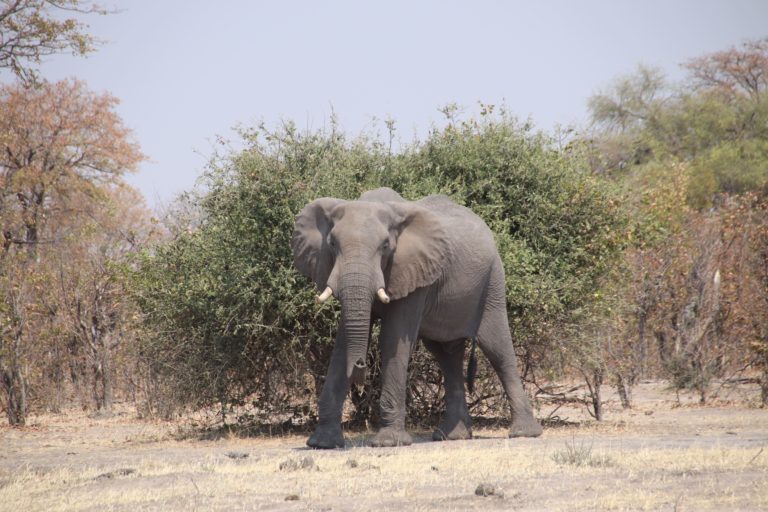
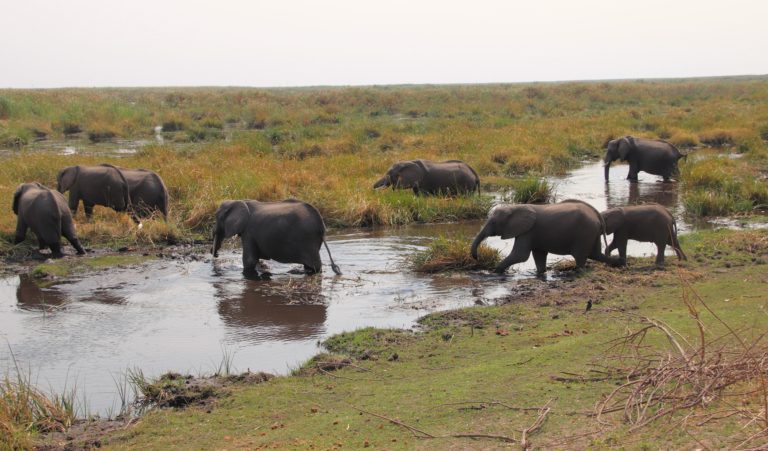
Camped near a marsh, a herd of elephants used a path right next to our site to get to the water.
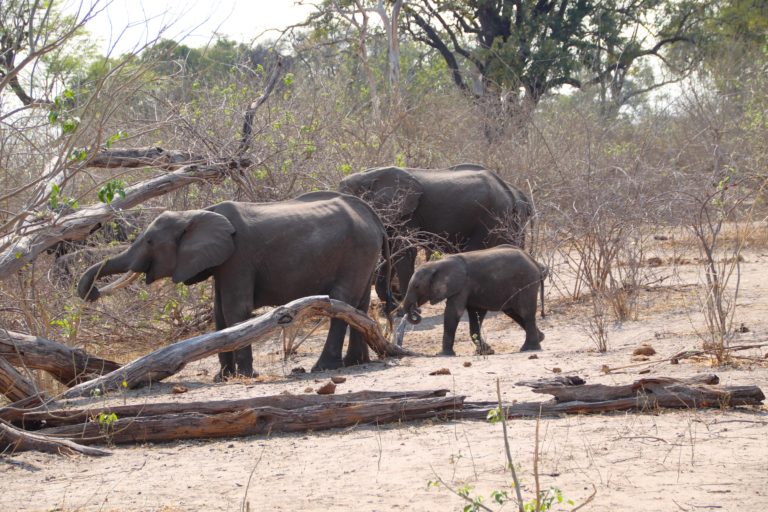
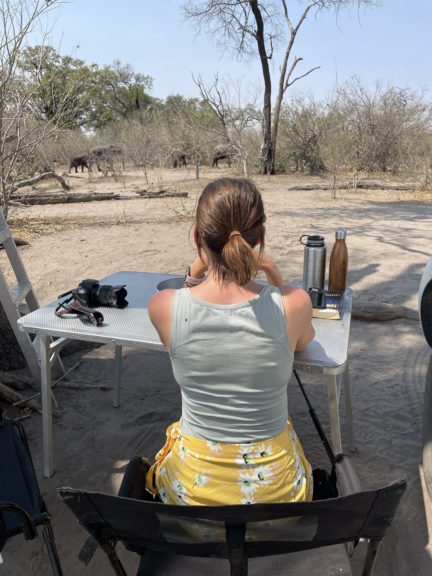
In the night I woke up to the sound of heavy footsteps and lay awake, listening, holding my breath. Peering carefully out the window, we watched an elephant move past, then stop to eat from the trees next to our tent.
We passed hours just watching the elephants all around, leaving our campsite only to go for short game drives.
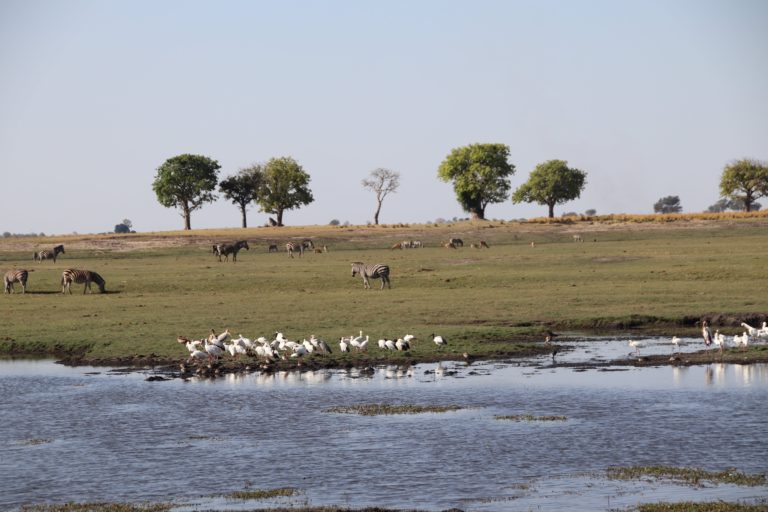
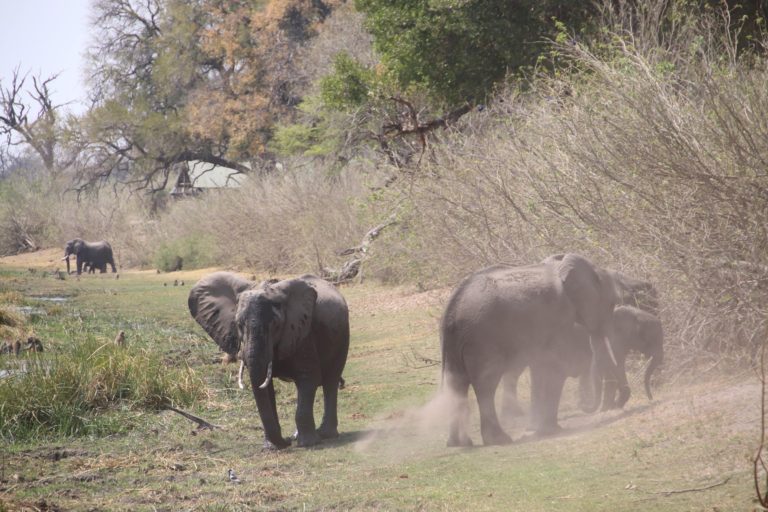
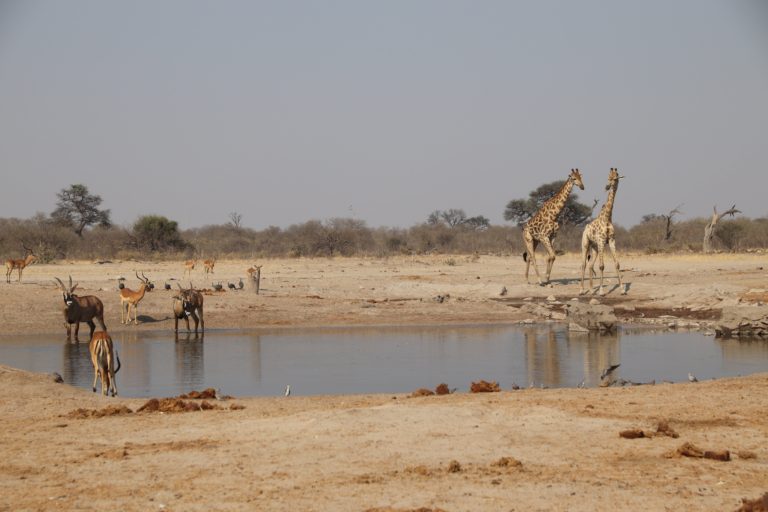
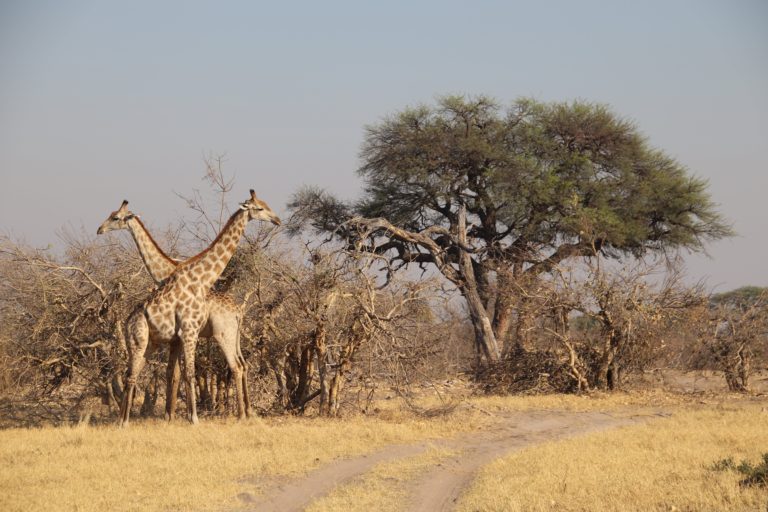
Then we’d come back to camp to cook dinner, watching as the elephants left the water and disappeared somewhere into the bush for the night, and eventually I’d get antsy about lions and go up into the tent.
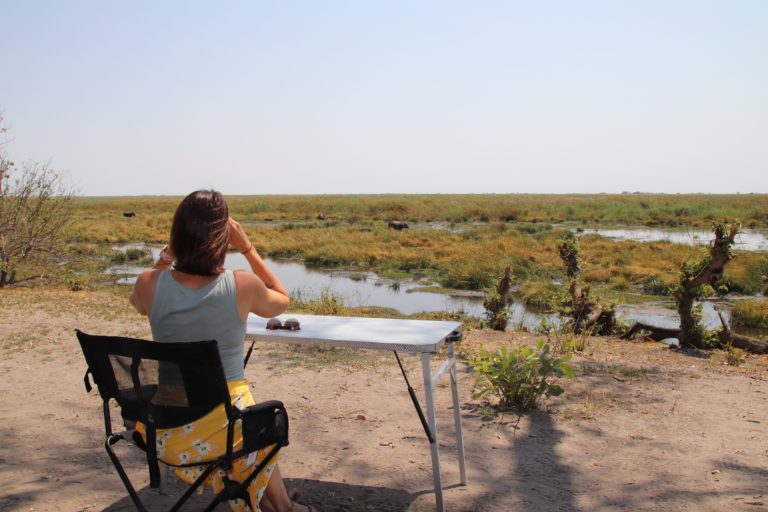
Driving back to town, we came close to it a few times but we never did get stuck in the sand.
…Back to reality (Nando’s chicken, Maun)
Eventually it was time to return our home on wheels, and get back on public transport. But in Botswana even a spin in a taxi can be a mini-safari, giving way for elephants and giraffes, zooming past zebras.
We sat in a Nando’s reliving the trip over chicken dinners…at least, a break from red meat. We slept comfortably in our air-conditioned room, and started making onward plans….after all, we’ve got months ahead on the road. It’s all good. But there is definitely something to be said for boerewors on the braai and falling asleep in a roof-tent on a chilly night under the stars, somewhere in Africa.
Read More
For more of our adventures (and misadventures) as we travel from Cameroon to Japan, check out the rest of my stories from the road.
Or, maybe you’re planning a trip like this one yourself? Take a look at this guide: Self-driving safari in southern Africa: itinerary and planning.



